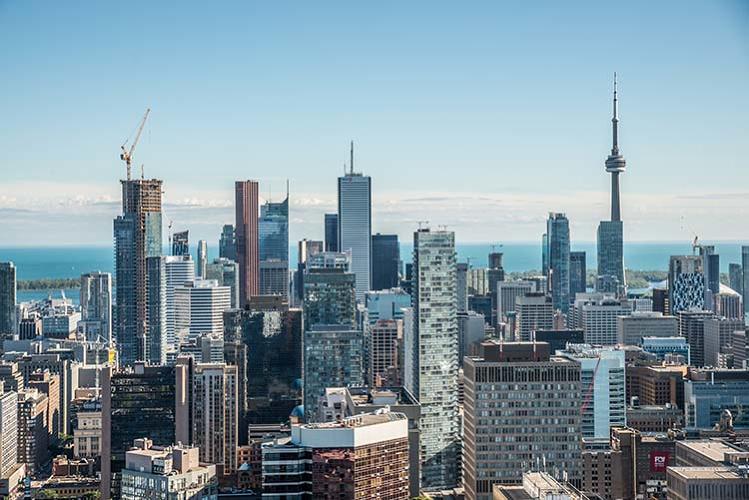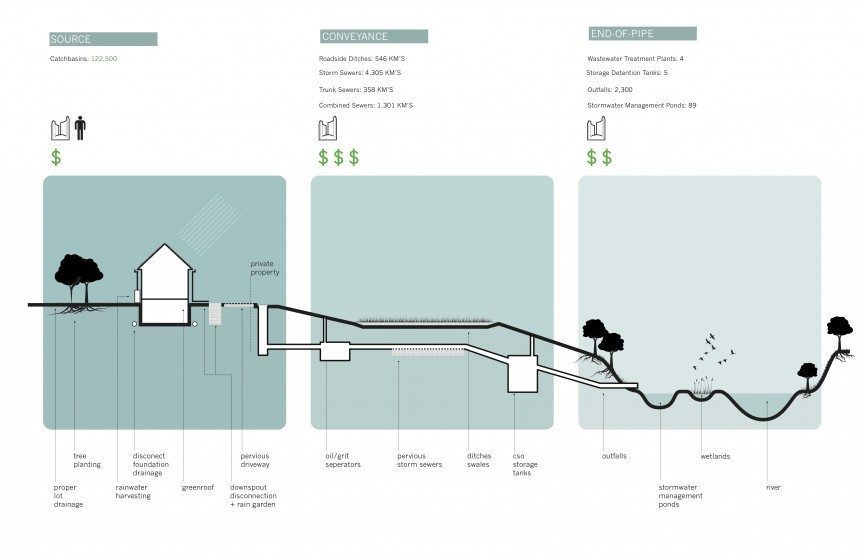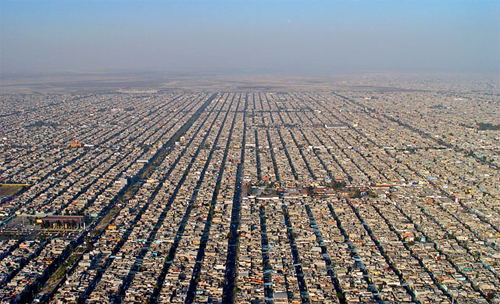This week, after a friend posted a video on facebook, I discovered the 'Information Civil Engineering' page which is a fascinating resource of time-lapse construction videos and innovative animations. Scrolling through video after video and picture after picture, this page presented a very interesting follow-up to last week's smart city discussion.
As I mentioned in last week's post, if there is one good thing that could come out of smart solutions, it is smart transportation, a resolution to our car issue. And while the posts I read through on Information Civil Engineering's page do not illustrate innovative new transport solutions, they do depict innovative development processes (or smart construction solutions) to resolving some of the issues with our current transport systems.
The first image which captured my attention was this one which pictures a truck towing a boring device with a diameter around four times the truck's own width. The reason this image struck me - aside from the obvious wow factor - was that it pictured the exact image my fiance tried to convey to me over the phone only a few night's ago of seeing an enormous truck towing an even larger boring device not dissimilar to this one (although I'm sure not quite this size) along the relatively narrow Castle Hill Road. The boring device is a self-driven machine which has been working away at the tunnel for the north-west rail link for some time. An incredible use of smart technology to construct a public transport network beneath the preciously scarce and valuable land of an increasingly urbanised Sydney. However, I find it a little ironic that a contraption designed to build more efficient transport systems has to be transported by a truck on our everyday commuter roads - and as my fiance recalled, the entire eastbound road had to be closed to do so.

Image: Information Civil Engineering 2016, 4 April 2016, <https://www.facebook.com/Information-Civil-Engineering-383870055097958/timeline>
The next image which I loved not because it particularly represents a smart technology but because of what it represents; a variety of transport modes, integrated, working in harmony to deliver an all-inclusive transport system. I don't think we can abolish personal motor transport completely from our cities. Sometimes a car is - whether we like it or not - essential. Hopefully it won't be long before we see the common current day car being replaced completely by a lightweight electrical vehicle with much more sustainable prospects. However, before that day, the image below represents a kind of ideal scenario where there are only a couple of cars on the road (not the major Sydney traffic jams we all have to deal with on a daily basis whether we're taking a car or not), several pedestrians walking and a regular rapid train network for public transport commuters. Whilst provision of improved pedestrian, cycle way and public transport infrastructure is essential, a smart solutions relies on the integration of a variety of transport modes. My main argument against the image below would be that hierarchically, the system requires a restructure (yes, this wouldn't work structurally but just an idea). Motor vehicles should not be provided with the best views of the surrounding waterway (they're driving anyway - they can't look out the window). If road and rail were switched, commuters could be encouraged to catch the train to work everyday just to take advantage of the views. I know that for me, the views over Sydney Harbour from the Harbour Bridge is what made the very long train trip to Crows Nest worthwhile everyday.

Image: Information Civil Engineering 2016, 4 April 2016, <https://www.facebook.com/Information-Civil-Engineering-383870055097958/timeline>
Finally, the below video illustrates again a smart space utilisation strategy for transport in cities to cope with population growth but this time, a different sort of smart technology is being utilised so that a train system can run beneath the sea. I'm not sure what I find more interesting about this idea, that modules of two-way train-line could potentially be prefabricated and linked on site or that the construction site is built to simply float on the water, requiring no land at all.
Video: Information Civil Engineering 2016, 3 April 2016, <https://www.facebook.com/Information-Civil-Engineering-383870055097958/timeline>
Although we haven't yet started building intercontinental transport systems along the ocean bed, maybe this idea is the beginnings of a new more sustainable system of international travel. I don't think it completely unrealistic to believe that at some time in the future we may be connected to our neighbouring countries by some sort of high-speed sub-ocean rail system. In fact, it's already begun over in Scandinavia where we see the technologies pictured in this video meet the integrated transport network pictured above...
Source: Andrei, M 2015, 'This amazing bridge-tunnel connects Sweden and Denmark', ZME Science, 22 September 2015, accessed 6 April 2016, <http://www.zmescience.com/research/technology/oresunt-bridge-sweden-denmark/>.
This is the Oresund Bridge, an incredible structure stretching 8 km over the Oresund Strait from Denmark to Sweden. Incredibly, this bridge connects into 4 km of underwater tunnel supporting 2 lanes of traffic each way and a two-way train line.























